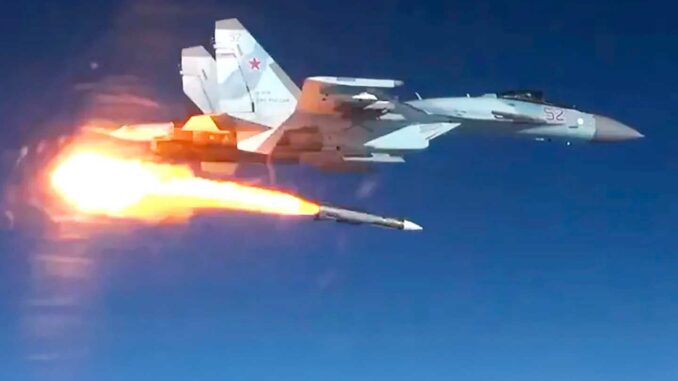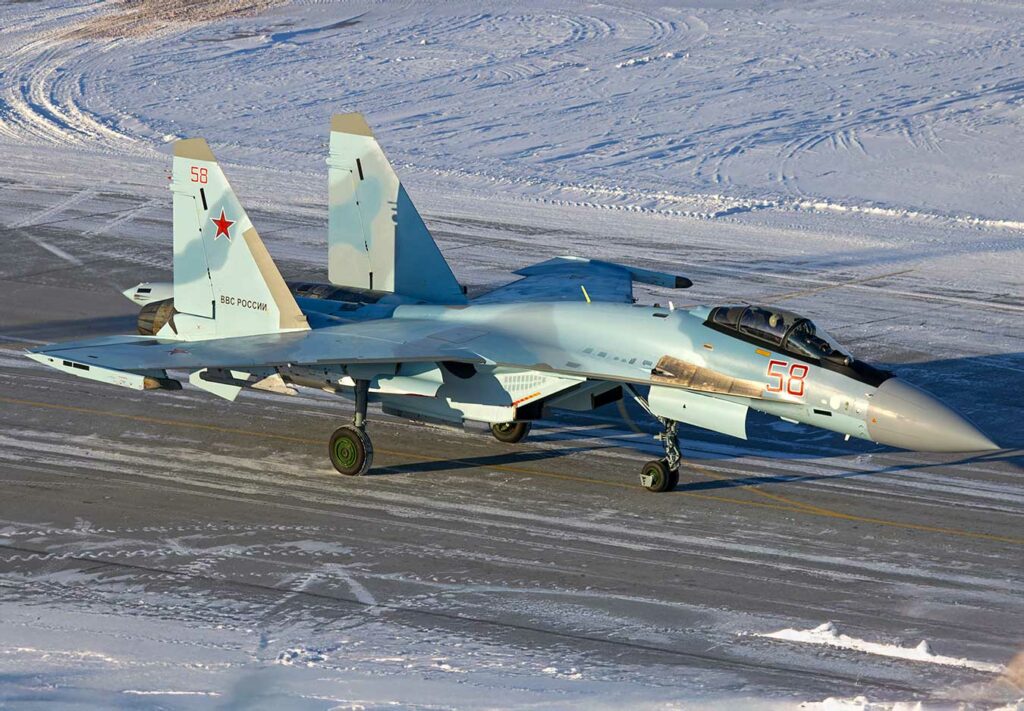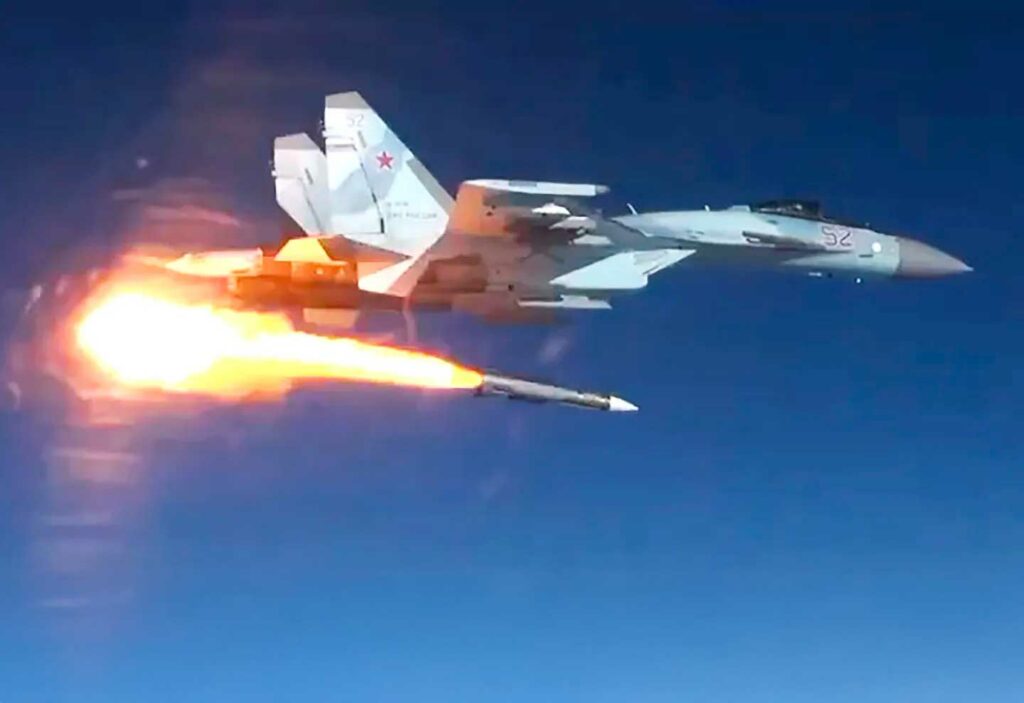
Russia is deploying a nuclear air-to-air missile, the R-37M, with a range of 400 km and a speed of Mach 6, changing the strategic air balance.
According to the 2025 report by the US Defense Intelligence Agency (DIA), Russia has introduced an air-to-air missile with a nuclear warhead, probably a version of the R-37M. This missile, with a range of 400 km and speeds exceeding Mach 6, is designed to be launched from aircraft such as the MiG-31BM, Su-35S, Su-30SM, and Su-57. This capability, unique in the world today, raises major concerns about air safety and strategic stability.

Technical characteristics of the R-37M missile
The R-37M is a long-range air-to-air missile developed by the Vympel design bureau. It is approximately 4.06 meters long, weighs approximately 510 kg, and is equipped with a 60 kg warhead. The missile uses a dual-pulse solid-fuel rocket motor, enabling it to reach speeds of over Mach 6 (approximately 7,400 km/h) and a maximum range of 400 km.
The R-37M’s guidance system combines inertial navigation with in-flight updates, an active radar seeker, and semi-active radar guidance in the terminal phase. This combination allows the missile to engage targets at long ranges with high accuracy, including high-value strategic aircraft such as AWACS and bombers.
Integration on Russian air platforms
The R-37M is designed to be integrated on several Russian air platforms, including:
- MiG-31BM: heavy interceptor capable of carrying multiple R-37Ms.
- Su-35S: 4++ generation multirole fighter with advanced detection capabilities.
- Su-30SM: two-seat multirole fighter, also compatible with the R-37M.
- Su-57: fifth-generation stealth fighter, providing an advanced platform for missile deployment.
This integration on various platforms increases Russia’s operational flexibility and strengthens its ability to engage long-range targets.
Strategic and doctrinal implications
The deployment of a nuclear-tipped air-to-air missile represents a significant evolution in Russian military doctrine. Historically, nuclear air-to-air missiles were designed to counter bomber formations during the Cold War. Today, this capability could be used to neutralize high-value air targets or emerging threats such as drone swarms.
Russia has also stationed tactical nuclear weapons in Belarus, strengthening its strategic posture in Eastern Europe. This move is part of a broader strategy to deter NATO and assert Russia’s military presence in the region.

International reactions and concerns
The deployment of the nuclear-capable R-37M has raised concerns among Western defense analysts. The possibility of using a nuclear weapon in an air context increases the risk of escalation in the event of a conflict. In addition, this unique capability could prompt other nations to develop similar systems, reigniting an arms race in the field of air-to-air missiles.
The United States has taken note of this development and may accelerate the development of its own long-range air-to-air missiles, such as the AIM-260, to maintain strategic balance.
Outlook and future considerations
The nuclear-capable R-37M represents a significant technological advance for Russia, strengthening its ability to project air power over long distances. However, this development raises questions about strategic stability and the risk of nuclear escalation. It is essential that the international community closely monitor these developments and engage in dialogue to prevent a new arms race and maintain global security.
War Wings Daily is an independant magazine.